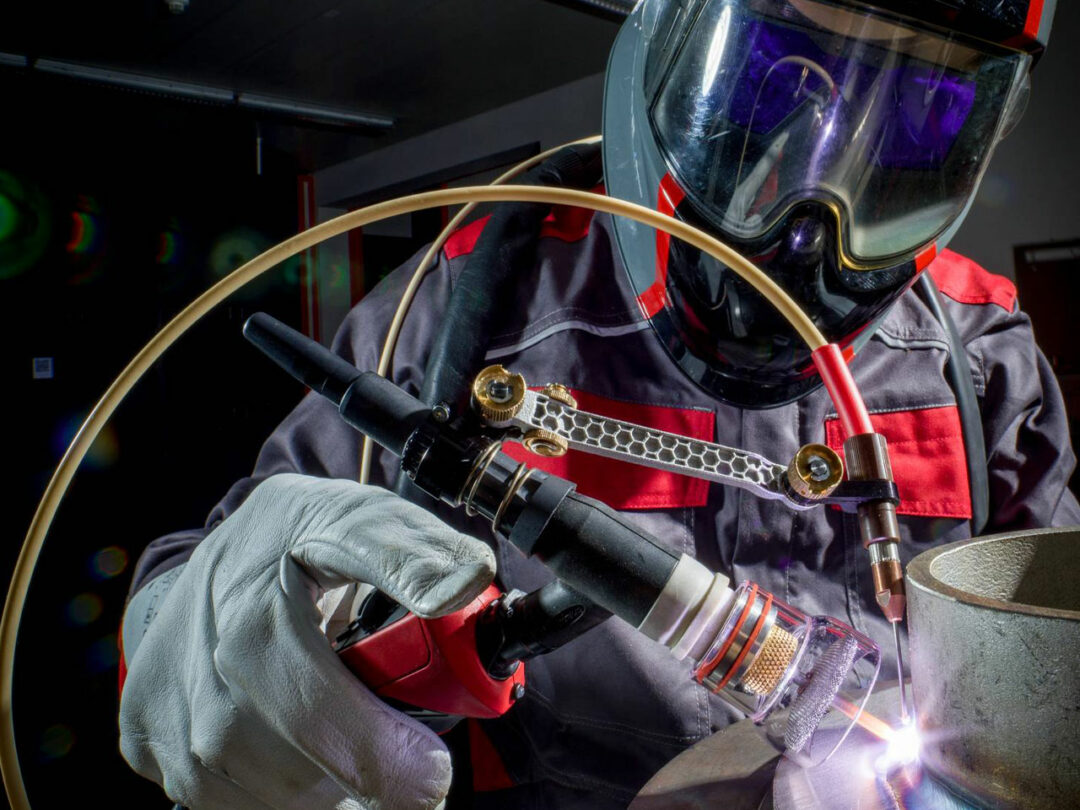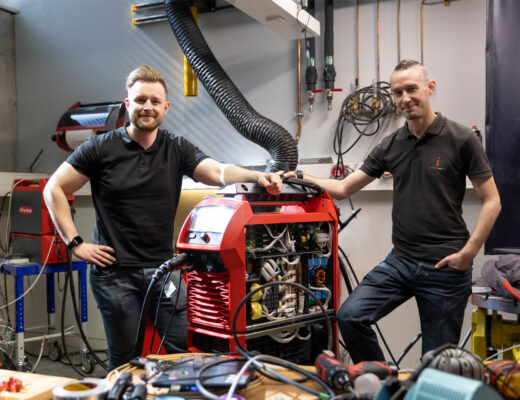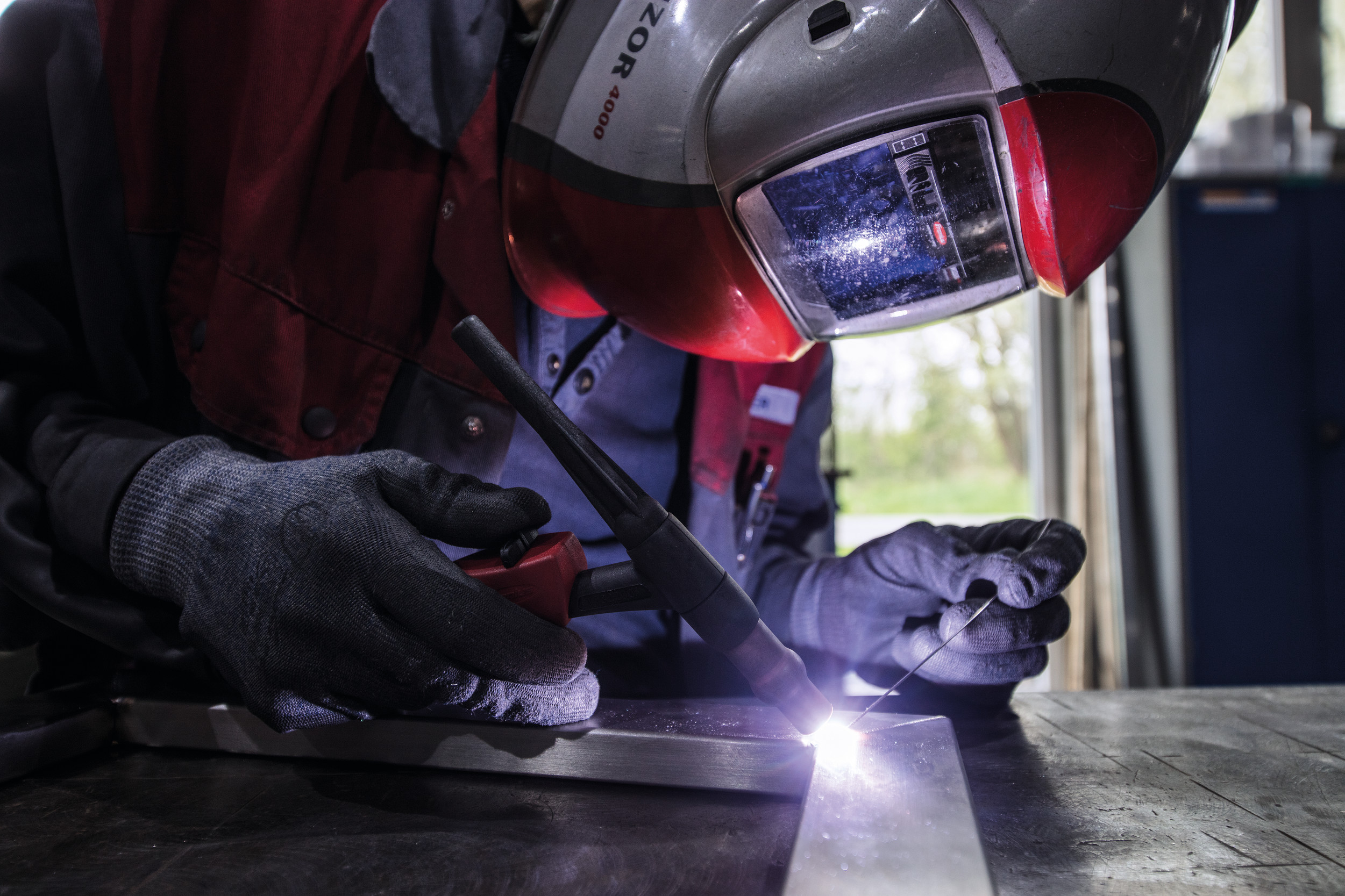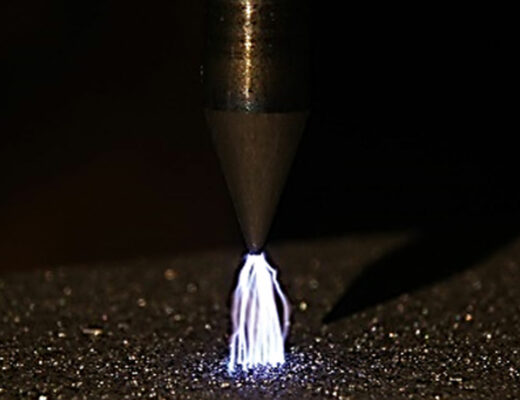With a steady hand, the welder feeds the filler metal into the weld pool. Centimeter by centimeter. Meter by meter. Always with the same even motion, creating a wonderfully neat weld. We’re talking, of course, about TIG welding, the most challenging of all welding processes, requiring the utmost concentration and dexterity. To achieve a professional finish takes considerable expertise, years of practice, and a lot of skill. That is, until now. Because TIG welding just got much easier. Read on to find out how …
TIG and Quality—the Perfect Match
Did you know that TIG welding is the only welding process that can produce high-quality results with all kinds of metal? That’s why it’s always the first choice when producing bacteria-resistant aluminum or stainless containers for the food industry. After all, food hygiene standards not only require absolute cleanliness but also perfect welds. The problem is that not all components lend themselves to automated welding, which means that now—and also in future—these products will still need to be welded by hand. Unfortunately, there are fewer and fewer professional welders who are skilled in manual TIG welding. The lack of welders in general is a serious problem and the situation with TIG welding is particularly bad.
TIG—a Hard Skill to Master
By comparison, MIG/MAG welding is much easier to learn. In this type of welding, the filler metal or welding wire serves as an electrode, which ignites the arc. As the welder works, this melts and more filler metal or welding wire is automatically fed in using a wirefeeder. The welder therefore has a free hand to support the hand holding the welding torch, which makes it much easier to control the position and direction of the torch. TIG welding is different: here, the tungsten electrode doesn’t melt and the welder must feed in the filler material with their free hand, either drop by drop or continuously. To prevent unwanted pores from forming, the welding wire (in the form of a rod) must also remain in the shielding gas environment the whole time. So, you see, TIG welding is a challenging task, requiring plenty of experience, skill, and a steady hand.
Dynamic Wire Control—the New Magic Formula
Thankfully, however, there is a solution—dynamic wire control, a smart new technology designed to make manual TIG welding a whole lot easier. So much easier, in fact, that novice TIG welders can achieve top-quality results with minimal training. In fact, this technology is so good that even amateurs can now produce the perfect TIG weld.
So, How Does It Work?
Dynamic wire control technology automatically selects the right wire speed based on the voltage between the arc and the workpiece. That means it adapts to the welder—not the other way around! To be more precise: The secret behind this new wire feed technology is that it automatically self-regulates. The welding system actively adjusts the wire speed to the welding behavior, torch position, and current conditions, even automatically compensating for component tolerances of up to 30%—for a 10 mm sheet that would be 3 mm!
Precise and User-Friendly
The name of this innovative new cold-wire welding process is TIG DynamicWire. In addition to offering a new process control function, TIG DynamicWire also impresses with its improved user experience. Great care was taken during the development process to ensure that all welders can work easily and comfortably, with as few steps and adjustments as possible. Once set up, the wirefeeder remains in a stable position. The aluminum holder, created using 3D printing, is also lightweight, ergonomic, and offers the user fantastic flexibility. And gone are the annoying vibrations through the torch handle, as—unlike with comparable solutions—the mechanical forward and backward motion of the wire has been dispensed with entirely with TIG DynamicWire.
Reduced Wear and the Perfect Weld
Faced with a shortage of professional welders, the iWave TIG welding system and its smart wirefeeder control TIG DynamicWire offer the perfect solution, allowing inexperienced welders to achieve good-quality welding results relatively quickly. The active adjustment of the wire speed compensates for any deviations, keeps welders safe, and ultimately delivers high-quality welds. What’s more, because the wire is not continually being moved forwards and backwards, wear parts such as the torch body, torch cap, and clamping sleeve last longer than comparable solutions.
Want to find out more about TIG DynamicWire? Then head to our website! You can also click here to find lots of useful information about iWave—our smart TIG welding system.
 Perfect Welding Blog
Perfect Welding Blog




2 Comments
Jose A De Leon
25. January 2023 at 15:13What an amazing development in TIG welding. Simply amazing! A complicated weld process has been made easier. This will certainly be a game changer in the industry.
JAmes Smith
19. February 2023 at 14:22Tig welding is perfect for better welding result. But I found Mig welding easier than Tig welding as it is easy to learn and apply.
Thanks for your article.